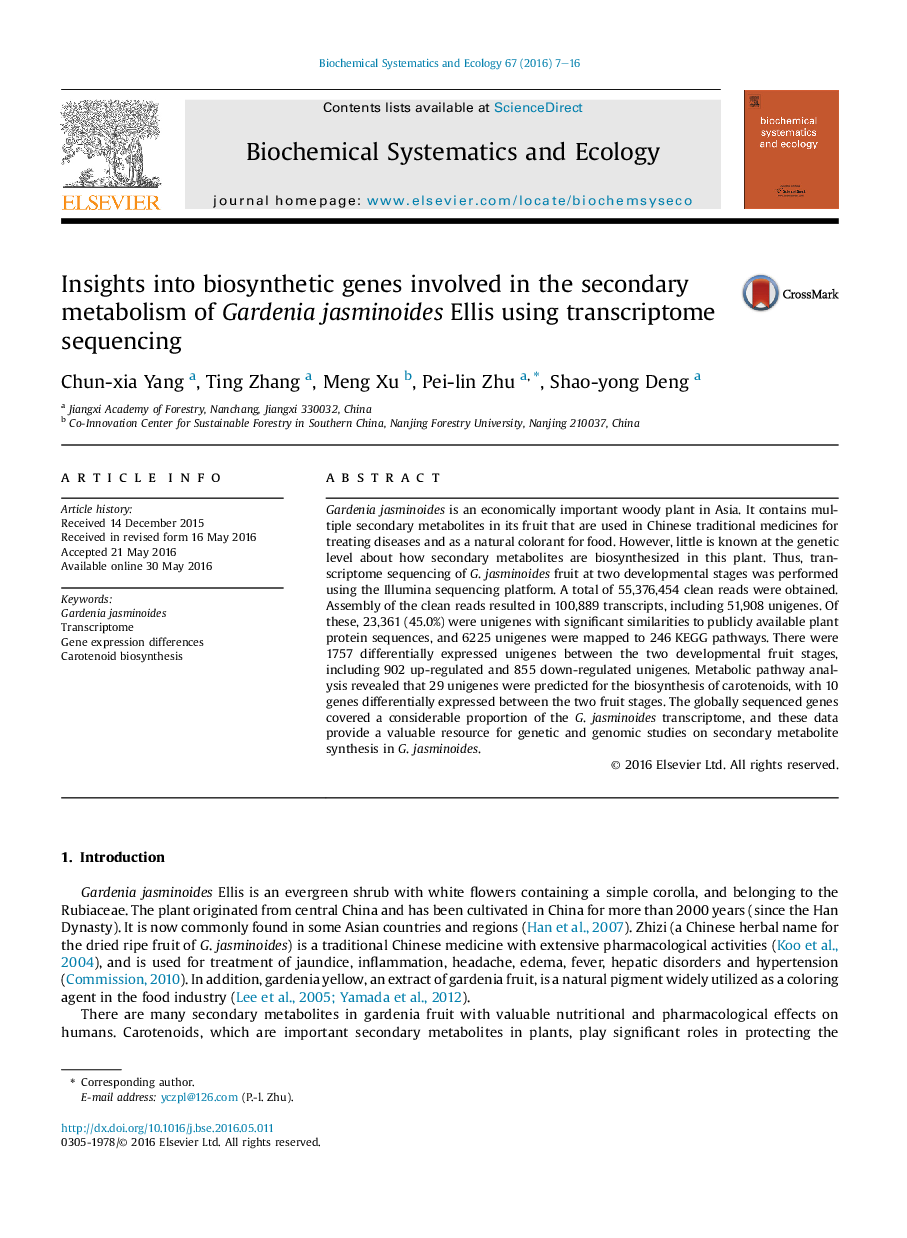| Article ID | Journal | Published Year | Pages | File Type |
|---|---|---|---|---|
| 1353696 | Biochemical Systematics and Ecology | 2016 | 10 Pages |
•Transcriptome sequencing of gardenia fruits at two developmental stages was performed for the first time.•Transcriptome data of gardenia fruits will provide valuable information on secondary metabolite biosynthesis.•We discovered that 29 unigenes were predicted for the biosynthesis of carotenoids, with 10 differentially expressed genes.
Gardenia jasminoides is an economically important woody plant in Asia. It contains multiple secondary metabolites in its fruit that are used in Chinese traditional medicines for treating diseases and as a natural colorant for food. However, little is known at the genetic level about how secondary metabolites are biosynthesized in this plant. Thus, transcriptome sequencing of G. jasminoides fruit at two developmental stages was performed using the Illumina sequencing platform. A total of 55,376,454 clean reads were obtained. Assembly of the clean reads resulted in 100,889 transcripts, including 51,908 unigenes. Of these, 23,361 (45.0%) were unigenes with significant similarities to publicly available plant protein sequences, and 6225 unigenes were mapped to 246 KEGG pathways. There were 1757 differentially expressed unigenes between the two developmental fruit stages, including 902 up-regulated and 855 down-regulated unigenes. Metabolic pathway analysis revealed that 29 unigenes were predicted for the biosynthesis of carotenoids, with 10 genes differentially expressed between the two fruit stages. The globally sequenced genes covered a considerable proportion of the G. jasminoides transcriptome, and these data provide a valuable resource for genetic and genomic studies on secondary metabolite synthesis in G. jasminoides.
